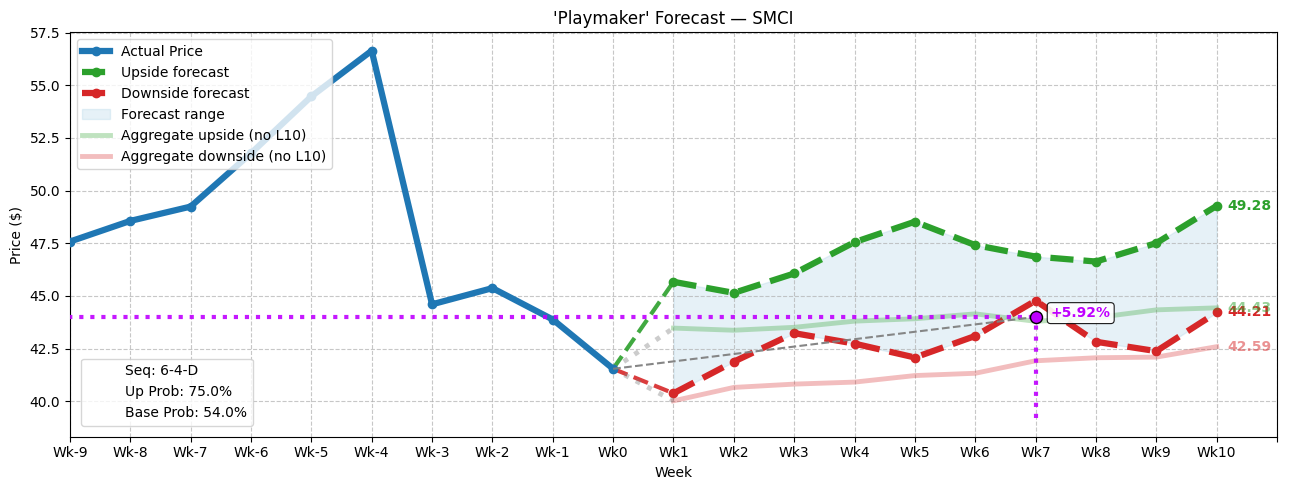- Market Overview
- Futures
- Options
- Custom Charts
- Spread Charts
- Market Heat Maps
- Historical Data
- Stocks
- Real-Time Markets
- Site Register
- Mobile Website
- Trading Calendar
- Futures 101
- Commodity Symbols
- Real-Time Quotes
- CME Resource Center
- Farmer's Almanac
- USDA Reports
The Saturday Spread: Taking What the Defense Will Give You For These 3 High-Risk, High-Reward Stocks (SMCI, CAH, GRPN)

For all the jargon and complexities associated with options, at the end of the day, what these derivative instruments provide is flexibility. Simply stated, they provide traders tools that regular equity ownership can’t provide.
In most cases, the strategy for market participation is purely binary: either you’re long the security in question or you’re not long (as in, you’re not participating in the opportunity at all). Of course, you can choose to short a position but that comes with incredible financial risks. As such, most retail folks wisely avoid this route.
On the other hand, options deliver directional flexibility. Sure, many point to the leveraged long and short strategies available. However, what I appreciate is the ability to be bullish or bearish from either a debit (cash outlay) or credit (cash influx) position.
Further, options provide strategic flexibility. Not all ideas may offer a clear directional trajectory over an indefinite period. Or in other cases, the anticipated move may only be minimal. With the geometry of particular transactions — such as bull call spreads — traders can potentially extract huge payouts from relatively small swings.
Of course, options tend to intimidate newcomers because of the jargon-rich environment. Here’s the deal with the Greeks and other complex concepts in the derivatives space: they provide information but they won’t automatically help you be a successful trader.
To actually make money trading, you have to think like a quarterback. You’re going to identify the coverage, exploit any vulnerabilities and hit your target. Here’s your game plan for the next several weeks.
Super Micro Computer (SMCI)
First up on our hit list is Super Micro Computer (SMCI). As with most technical analysts, we’re going to operate with the reasonable presupposition that the market has already priced in all publicly available information for SMCI stock. But rather than relying on interpretive signals, we’re going to look for empirical, falsifiable patterns.
But before we dive into the good stuff, we’ve got to establish a baseline expectation for SMCI stock. Using path-dependent analytics — which takes into account SMCI’s aggregate pricing data — we can map out the security’s expected drift. Over the next 10 weeks and assuming no special mispricing, Super Micro may fluctuate somewhere between about $42.50 and $44.20.
However, in the past 10 weeks, the market has voted to buy SMCI stock six times and sell four times. Moreover, the stock incurred a downward trajectory, despite the balance of accumulative sessions outweighing distributive. Historically, this sequence — which can be classified as 6-4-D — has represented a near-term reversal.
What’s more, the conditional drift associated with this sequence features a much wider range with a positive skew, landing between $44 and over $49.

In football terms, the market makers are positioned in an aggressive Cover 1 defense, with only one dedicated defender covering the deep ball. As such, using data provided by Barchart Premier, I’d take a look at the 42/44 bull call spread expiring Oct. 17.
If SMCI stock rises 5.92% from now to the expiration date, you can collect a maximum payout of over 117%.
Cardinal Health (CAH)
Next on our list is Cardinal Health (CAH). One of the standout names in the healthcare services industry, Cardinal has witnessed its shares rise nearly 26% since the start of this year. However, since the second half of 2025, CAH stock is down more than 11%, potentially offering contrarians a discount.
Using pathway-dependent analytics, the natural drift associated with CAH stock may see it range between a median low of $150.59 to a median high of $155.25 over the next 10 weeks. However, CAH has also printed a 3-7-D sequence: three up weeks, seven down weeks, with an overall downward trajectory. Historically, this sequence tends to be a sentiment reversal rather than a bearish continuation pattern.
Even more enticing, the projected drift of the 3-7-D may see CAH stock ranging between $165 and over $175. Again, I would classify market makers as being positioned in an aggressive Cover 1 defense, with the focus being on putting more defenders in the box to stop the run.

Such a scheme leaves market makers vulnerable to the long ball and that’s what we’re going to aim for with the 155/160 bull spread expiring Oct. 17. If CAH stock rises 7.54% from now to expiration, the max payout for the aforementioned trade clocks in at over 122%.
Groupon (GRPN)
Without hesitation, Groupon (GRPN) is easily the riskiest idea on this list. It’s not just about the volatility and overall wildness of GRPN stock, although it’s liable to take people on quite a journey. Sure, on a year-to-date basis, GRPN is up nearly 115%. However, in the trailing month, it also slipped almost 18%. Still, there could be a case for a discount here.
Again, using pathway-dependent analytics, the natural drift associated with GRPN stock may see it range between a median low of roughly $24.27 and a median high of $26.42. However, GRPN has also printed a 3-7-D sequence: three up weeks, seven down weeks, negative trajectory. When this sequence flashes, there’s a 55.9% chance that the following week’s price action results in upside.
Moreover, the conditional drift associated with the 3-7-D may see the price range from around $23 to $32. This range engulfs GRPN’s baseline or aggregate drift, which means that there’s potential opportunity on the upside but also sizable risk to the downside.
As mentioned earlier, in football terms, market makers are positioned in an aggressive Cover 1 defensive scheme. However, in GRPN’s case, some of the defenders are also showing blitz. That’s going to leave the middle of the field open — assuming you don’t get sacked.

If you’re feeling gutsy, I’d take a look at the 28/30 bull spread expiring Oct. 17. You’ll need a 15% move but this would translate to a nearly 208% payout if successful.
On the date of publication, Josh Enomoto did not have (either directly or indirectly) positions in any of the securities mentioned in this article. All information and data in this article is solely for informational purposes. For more information please view the Barchart Disclosure Policy here.